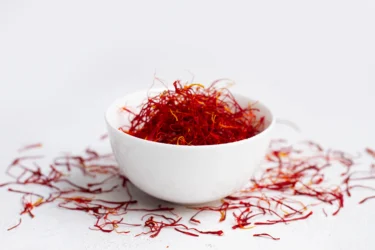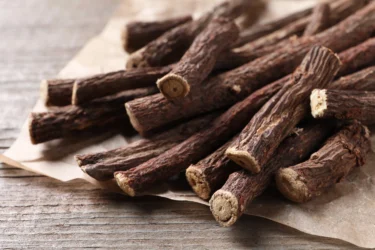Home Remedies for Dark Underarms
By Dr. Raina N. Nahar +2 more

Get,

to manage your symptom
Get your,


4 Cr+ families
benefitted

OTP sent to 9988776655



You’ve successfully subscribed to receive
doctor-approved tips on
Whatsapp

Get ready to feel your best.

Hi There,
Download the PharmEasy App now!!


Register to Avail the Offer
Send OTPBy continuing, you agree with our Privacy Policy and Terms and Conditions

Hi There,
Sign up on PharmEasy now!!
Trusted by 4 crore+ families

OTP sent to 9988776655



You have unlocked 25% off on medicines




Code: NU25
By Dr. Raina N. Nahar +2 more
Table of Contents
Skin is the largest organ in the body. The human skin in the underarm (axilla) region is unique. It contains large numbers of hair follicles and oil glands and so is treated differently to avoid odor and sweat. There is also an urge for hair removal to maintain personal hygiene. But these treatments have a risk of skin irritation and reddening (usually in patches). Inflammation and injury to this sensitive area can lead to increased melanin (a skin pigment responsible for colour) production, making the skin dark. Dark underarms is generally a common concern for women as they have an impact on aesthetics. If you face similar issues with your underarms, read along for some helpful home remedies that will come in handy.
Studies1 support that underarm darkening is characterized by increased production of a natural skin pigment called melanin due to mild irritation. Hair plucking is mainly responsible for skin damage.

Other factors that may be responsible for dark underarms are:
Apart from these, certain fungal infections like tinea cruris, erythrasma and pityriasis versicolor can also lead to darkening of underarms. These require prompt diagnosis and treatment by a dermatologist.
Apart from hormonal changes, pregnancy, medications and genetics, it is pretty common and a usual occurrence to have dark armpits. A person need not worry about that. Vitamin B3 (niacin) deficiency may also cause the condition. Supplementation with niacin can reduce the darkness of the armpits.
Dr Ashish Bajaj, M.B.B.S, M.D. in Clinical Pharmacology and Toxicology
In certain skin types, these changes that occur due to irritation can result in hyperpigmentation or development of dark areas of skin in the underarms1.
Traditional medicinal remedies are used to treat a number of skin disorders, with medicinal plants being particularly effective in the treatment of skin hyperpigmentation. Following are some home remedies for managing dark underarms:

Saffron is also known as red gold. Studies4 report that saffron has anti-pigmentation effect by decreasing melanin production. It may be used in combination with milk or cream. This mixture can be applied to the affected area on the underarms, which may help in lightening the skin colour.

Grapeseed oil has antioxidants such as vitamin C and E and also beta-carotene (a component of vitamins and several types of fatty acids). Due to the presence of these compounds, grape seed oil can help with lightening of skin in the underarms. Studies have shown that both oral and topical preparations of grapeseed oil can be beneficial for hyperpigmentation as it inhibits the enzyme responsible for the synthesis of melanin pigment that causes skin darkening5,6.

The rate of skin darkening can be suppressed by the consumption of coffee and green tea. Thus drinking coffee and green tea may result in suppression of hyperpigmentation in the underarms7.

Aloe vera inhibits the enzyme responsible for the synthesis of pigment, causing skin darkening8. Aloe vera gel can be applied and massaged gently in the underarm area for lighter armpits.

Liquorice is known to inhibit the enzyme responsible for the synthesis of melanin that causes skin darkening and thus inhibits pigmentation9. You can use liquorice in any form and apply it to your underarms.

Some other plants may also be useful to manage skin darkening. These include heartwood, raspberry, citrus fruit peel, pomegranate, corn bran, and longan seed10.
Dark underarms can be a source of insecurity for many individuals, but with the right treatment and preventive measures, they can be lightened and eventually fade away. Consult a dermatologist to determine the best course of action and find the right combination of home remedies and medical treatments.
Dr. M.G. Kartheeka, MBBS, MD(Pediatrics)
Also Read: Effective Home Remedies for Period Pain
You should seek medical advice for dark underarms if you observe the following:
These may indicate an underlying health issue such as hormonal disturbance or infection, which require medical attention.
Also Read: Effective Home Remedies for Blackheads
The underarm skin is unique and contains oil-producing glands and hair follicles. Thus, the skin in this region has special requirements based on the desire to maintain hygiene and personal care. Personal care activities may cause irritation, redness and hyperpigmentation, causing dark underarms. Dark underarms may be of concern due to their impact on a person’s physical appearance. Several home remedies like using saffron, coffee, green tea, etc., can help in the management of underarm skin hyperpigmentation. You should contact a doctor if any underlying conditions such as acanthosis nigricans are suspected.
Also Read: Natural Home Remedies for Malaria
Yes, personal care involves the use of chemical products like antiperspirants and deodorants to reduce sweat and bad body odour. It also includes the removal of hair from the underarms. These practices may result in skin irritation and darkening of the underarms.
Yes, the products used as home remedies are made from natural ingredients. Thus, the use of herbs is recognized as a simpler and safer alternative to chemical treatments for improving skin conditions such as dark underarms. However, if any underlying skin condition is present, its best to discuss with a doctor.
Some home remedies are found to be effective in managing dark underarms including saffron, grape seed, beefsteak plant, pomegranate, aloe vera, coffee, green tea, etc. Although remember, consistency is required while using any home remedy and results can vary based on individual factors.
Acanthosis nigricans is a condition that causes dry, dark patches of skin usually in the armpits, neck, or groin. It could be genetic or a sign of an underlying condition, so it needs a doctor’s consultation.
Disclaimer: The information provided here is for educational/awareness purposes only and is not intended to be a substitute for medical treatment by a healthcare professional and should not be relied upon to diagnose or treat any medical condition. The reader should consult a registered medical practitioner to determine the appropriateness of the information and before consuming any medication. PharmEasy does not provide any guarantee or warranty (express or implied) regarding the accuracy, adequacy, completeness, legality, reliability or usefulness of the information; and disclaims any liability arising thereof.
Comments

Leave your comment...
You may also like
Comments